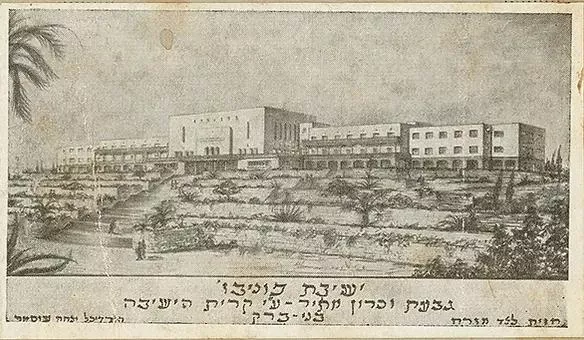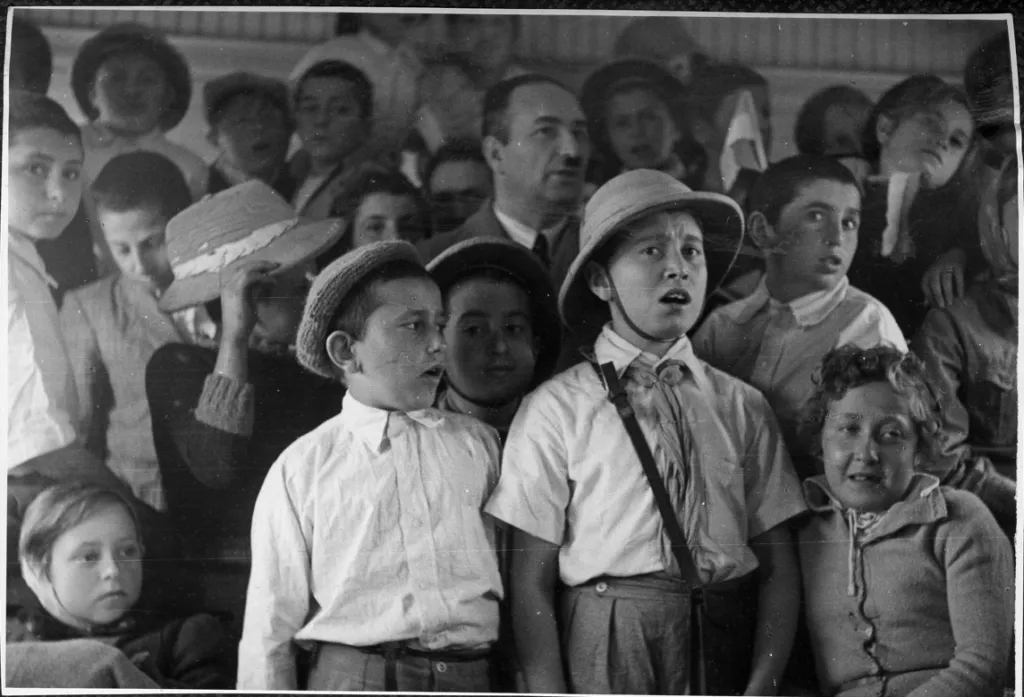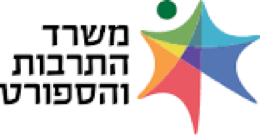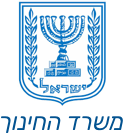The Orphan Boy from the Town who was the Glory of the Torah World
By: Yaakov Rosenfeld, Ganzach Kiddush Hashem
Who hasn’t heard of the “Tehran Children”? It is doubtful, though, whether today’s youth know what and who this phrase is referring to.
Today, the great Rosh Yeshiva (head of a yeshiva), Rabbi Gershon Edelstein z”l, passed away. In his youth, he gave his all to the Tehran Children, who after suffering and upheavals came to Israel with no education and basic knowledge because the terrible war robbed them of their childhood and teenage years.
Rabbi Gershon was a Jew of self-sacrifice.
His mother, from whom he was orphaned in his youth, managed to falsify his birth date and that of his brother Rabbi Yaakov, and since they were registered younger than their true age, they were not forced to be educated in a Yevsektsiya (Jewish communist) supervised school. He studied in secret as a child, together with his brother, with the influential Chabad Rabbi Zalman Leib Estolin, and later with other Chabad rabbis who dedicated their lives to teach the Children of Israel Torah underground, which according to communist law was a criminal offense punishable by exile or death.
After the death of his mother, Rebbetzin Miriam, his father obtained permission to immigrate to the Land of Israel, and on Lag Ba’Omer 5694 (1934), the family arrived in the Land of Israel.
The father, the Gaon (genius) Rabbi Zvi Yehuda, settled in Ramat Hasharon, where he was later appointed to serve as rabbi and the head of the beit din (religious court), and in their small and poor house, which was devoid of furniture, the father lived and taught his sons Torah.
Days and nights the boys sat and studied, and what was the study schedule of the young orphans in a city where no yeshiva was located? Let us read the words of Rabbi Gershon himself in his book “The Ways of Strengthening”. The words are fascinating and we present them as they are, as they were written:
“In my childhood, I studied all of my years with my father who was our teacher z”l and my brother Rabbi Yaakov, and I will tell you a little about the schedule of our studies at that time.”
“When we came to Israel in 5694 (1934), we were still less than bar mitzvah age and we studied tractate Bava Kama, Gemara with the Rashi commentary, we would learn everything twice, and there were three Gemaras on the table. One Gemara that we brought with us from Russia, and two more Gemaras that my father who was our teacher brought from the synagogue, and one of us would read with my father until the end of the matter, and then we would take turns and the other would read, as they do in chedder when they let the children read… and we started with Bava Kama already in Russia when we were about seven or eight years old, and here in Israel we continued and finished the tractate.”
“And then we had to start another tractate, and there were no more Gemaras at home. Only one tractate of Sanhedrin, the volume of Shavuot from the old Vilna Shas (publication of the Mishna), that’s why we started the Sanhedrin tractate. We took from the synagogue two more small Gemaras without interpretations, and there my father our teacher studied with the large Gemara and we with the small Gemaras and we studied the Sanhedrin tractate as well without the Tosfot commentary twice, Each day we progressed as much as is sufficient and the next day we repeated it and continued on, and we used to complete about a page of Gemara in two hours, first repeating what we learned the previous day and then continuing, and at the end of each chapter we repeated it a third time, and so during the winter we finished each Sanhedrin tractate and I made a siyum (celebration upon finishing a segment of Torah learning) on it on the eve of Passover.”
“After the Sanhedrin, we continued the Shavuot tractate, which was also in the same volume, and we had already learned the Shavuot tractate with the Tosfot commentary, all quickly and simply, and sometimes we did not understand some of the Tosfot, only my father our teacher would understand and move on, and the next day when we returned, the rest of the details were absorbed and we understood the simplicity, and after each chapter we also learned the entire Rosh and Ran commentaries in order, and the Maimonides’s words belonging to the tractate of Shavuot laws of claims and charges, up to chapter 9 with the Kesef Mishna book.”
“And we studied like this three times a day, first in the morning we studied for about four hours. And in the middle there was a break of about half an hour during which my father our teacher rested a bit and we played children’s games. In the afternoon we studied the second time until the Mincha prayer, and after Mincha, there was a lesson in Mishna, and we also studied Ein Ya’akov or Chumash (Pentateuch) with the Rashi commentary, until the Maariv prayer, and then we returned home to the third period and again we studied, then we would learn on our own what we wanted. Everything was pleasant without pressure.”
“And after the tractate of Shavuot, we studied the tractate of Bava Metzia, as a continuation of the chapter on the oath of the judges, and even then we learned everything twice with the commentaries of Rashi and Tosfot and whatever we did not understand, we did not delay, and at the end of the chapter we would repeat the whole chapter a third time at once, and it would go very quickly, because you already know it and it’s easy to go back, and the study was pleasant and attractive and very interesting. And when we finished the tractate of Bava Metzia, it was as if we studied the Rosh and the Nimukei Yosef commentaries, as well as Maimonides’s words that belong to the tractate Bava Metzia, the laws of claims and charges, and the laws of lending and borrowing, matters of usury, and more. After Bava Metzia, we continued Bava Batra also in the same form, as well as the continuation of Maimonides’s words on claims and charges from chapter 9 of the laws of land ownership, and then we studied the tractates of Nedarim, Kidduishin, and Makot.”
“And then we started studying tractate Pesachim, and my father our teacher would also give lessons to men after Maariv, and he gave lessons on tractates Brachot and Shabbat, and apparently skipped tractate Eruvin, and we as children sat and listened to the lessons, and picked up something from them.”
“And we began to study the tractate Pesachim on Rosh Hashanah after the prayers, at the time we were in Ramat Hasharon, and they did not extend the prayer there like in the yeshiva, and at twelve in the afternoon they had already finished the prayer, and we went home and made kiddush and then we began to study the tractate Pesachim, and we also studied Gemara with the commentaries of Rashi and Tosfot and Maimonides and, and in this tractate we also learned the commentaries of the Tur and Beit Yosef and Magen Avraham, all quickly and simply, and by Rosh Chodesh Shvat (the 1st day of the Jewish month of Shvat) we had already finished the entire tractate four times!”
“Since in Pesachim there are holy matters, my father our teacher said that we should start studying the order of Kedoshim, and he also said that he heard that Rabbi Shapira in his yeshiva in Lublin studied Kedoshim, and we then began to study tractate Zevachim, and although there were still no Chidushei HaGriz commentary at that time, there was a Asifat Zekeinim and the Zevach Toda of the Chafetz Chaim (Rabbi Israel Meir Kagan), as well as Keren Ora, Rashash, and more, and we studied everything twice in our own way, and at the end of each chapter we came back again a third time, and a fourth time at the end of the tractate, and then we also studied Maimonides, the laws of making holy things unholy and the act of sacrifices. And in this way we studied every order of the sacred, including tractates Tamid, Kanim, and Midot, except for tractate Chulin which we did not study, because it is a matter of opinion and not sacred, and as if we studied the tractates backwards and not in order, and we completed tractate Bechorot, and we also studied the entire Rit Algazi commentary, all in a simple and easy manner.”
“And sometimes I would ask something in speculation and my father our teacher would answer and explain, and again I would ask about the excuse, and he would answer that too, but when I asked a third time he would stop and say that’s enough and there’s no need to linger any longer.”
“And after the order of Kedoshim, we started to study tractate Yevamot for about two years, and then I also had time to study and review by myself, and I would learn the commentaries of the Rashba and the Rosh as well as Rabbi Akiva Eiger and Chazon Ish sometimes.”
“And at the time my father our teacher was doubtful that maybe he is not doing a good thing by not sending us to the yeshiva, and there was a guest who visited our home and said that if we stay at home we might become prideful and think that we are the whole world… And my father our teacher asked the Chazon Ish and Geriz rabbis, and they both told him that he is doing well as he himself studies with us, and it is good that he continues to study with us like this.”
“And then we continued to study at home for a while longer, but we saw that the time was being wasted, and there were interruptions, and we decided to go to yeshiva, and in the month of Elul 5702 (summer 1942) we went to the Lomza Yeshiva (in Petach Tikva), my brother Rabbi Yaakov and I, and at that time we studied in the yeshiva tractate Bava Batra, the chapter ‘Mi She’met’ (one who dies), but we already knew this from what we studied at home with my father our teacher, so we also started studying tractate Sukkah, everything quickly and simply, and from the beginning of the month of Elul to the end of the month we finished tractate Sukkah.”
“After a little more than a year from the day we came to the yeshiva, my father our teacher said that he saw that the success in the yeshiva was not what he thought it would be, and that it would be better for us to return to study with him at home, and we returned to our home on Sukkot 5704 (1944).”
“Although after a short time it became known that the Ponevezher Rebbe was thinking of opening a yeshiva, and he took Rabbi Shmuel Rozovsky to head the yeshiva, and Rabbi Shmuel came to us in Ramat Hasharon and said to my father our that the Ponovezher Rebbe wanted to open a yeshiva and he wanted us to come study there, and the rabbi said that the Ponovezher Rebbe is a personality that should be used, and we should use him wisely. And in the month of Kislev 5704 (1904), the yeshiva opened with four other students aside from us…”
As mentioned, during the time of Rabbi Gershon Edelstein’s studies at Ponovezh, a yeshiva of which he was one of the founders along with 5 other students, a group of children from Tehran were taken in by the yeshiva. In Ponevezh, where they were warmly and lovingly received; they had the opportunity to study Torah from the best of the elites who were once the greats of the generation, and among them, without a doubt, was the wonderful young man, who later led the world of Torah in the Land of Israel, the genius Rabbi Gershon Edelstein.

The Ponovezh Yeshiva in Bnei Brak
These days, when we mark the 80th anniversary of the immigration of the children of Tehran to Israel, we will present a series of articles and photos from this piece of history, and we will commemorate various figures, some known and some not, who were part of this group.

The Tehran Children
As well, during the shiva (7 day mourning period) for Rabbi Edelstein, we will present his memories of the small town of Shumyachi, which in the past had a distinct Jewish majority, and of all its glory, almost nothing remains.







